Svínafellsjökull is one of Iceland’s best accessible glaciers. Starting at the slopes of Iceland’s highest mountain Hvannadalshnúkur (2110 m), the glacier runs all the way down to the main road close to sea level. For a long time glacier excursions were organised here because of the glacier’s proximity.
The only thing separating the 11 km long glacier from the road is its terminal moraine. This hill, composed of bulldozered material, is almost completely covered by Lupine, a plant species introduced from Alaska to counter soil erosion. Lupine is doing so well, however, that it is spreading to parts of the country it was not ‘supposed’ to go. Although the species is therefore controlled in places, there are signs that Lupine cover reduces again after some twenty years after settlement.
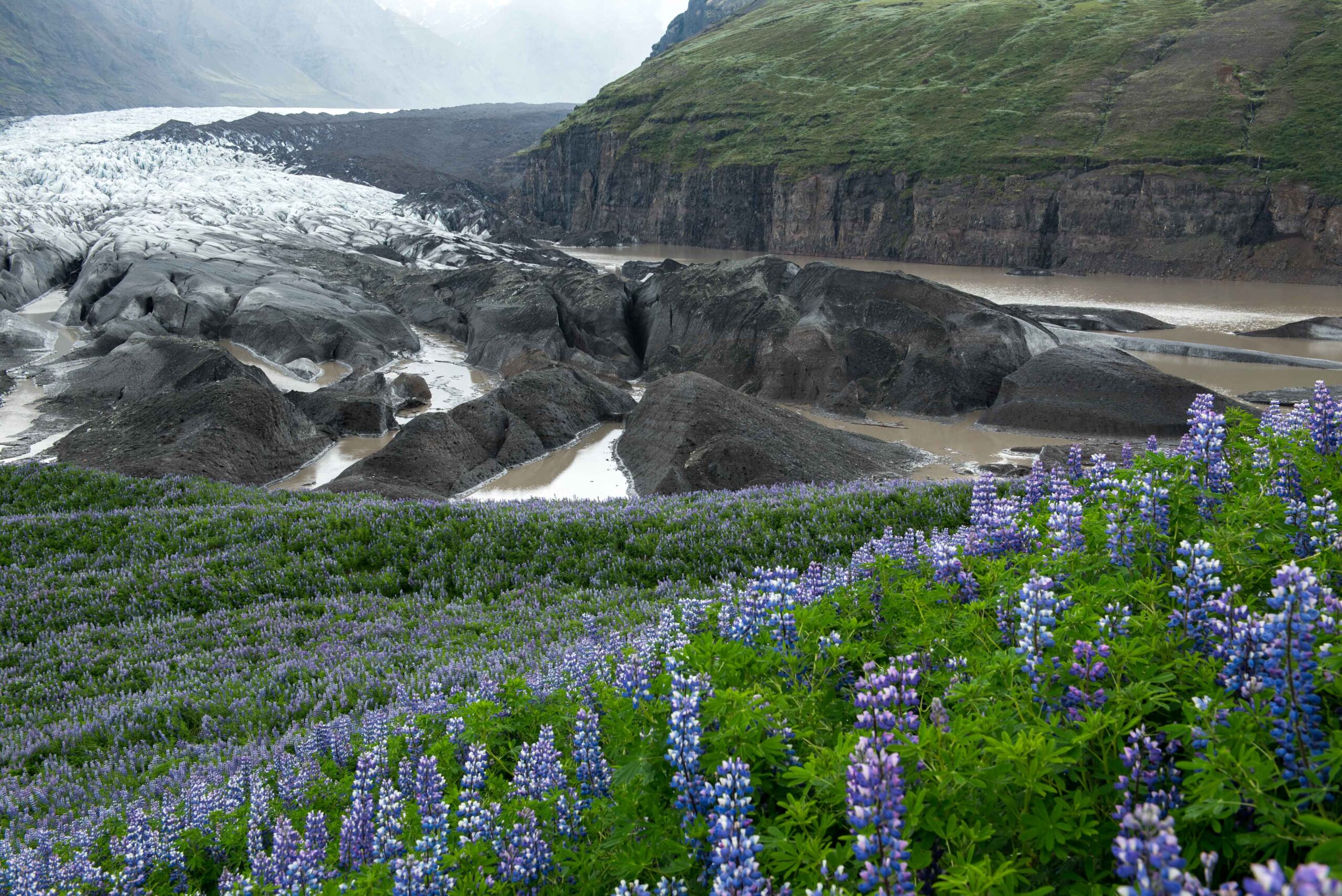

What makes Svínafellsjökull different from most other glaciers is its very limited recession over the last eighty years. This is mainly a result of the very thick snout, as the glacier ends in an overdeepening (glacial eroded depression) several hundred meters deep which is completely filled with ice (Hannesdottir et al., 2015). Therefore the glacier, despite continued thinning, still reaches the moraine and even pushes up new ones. Because the older parts of the moraine are covered in Lupine, this gives a very sharp contrast between the glacier and a sea of flowers.
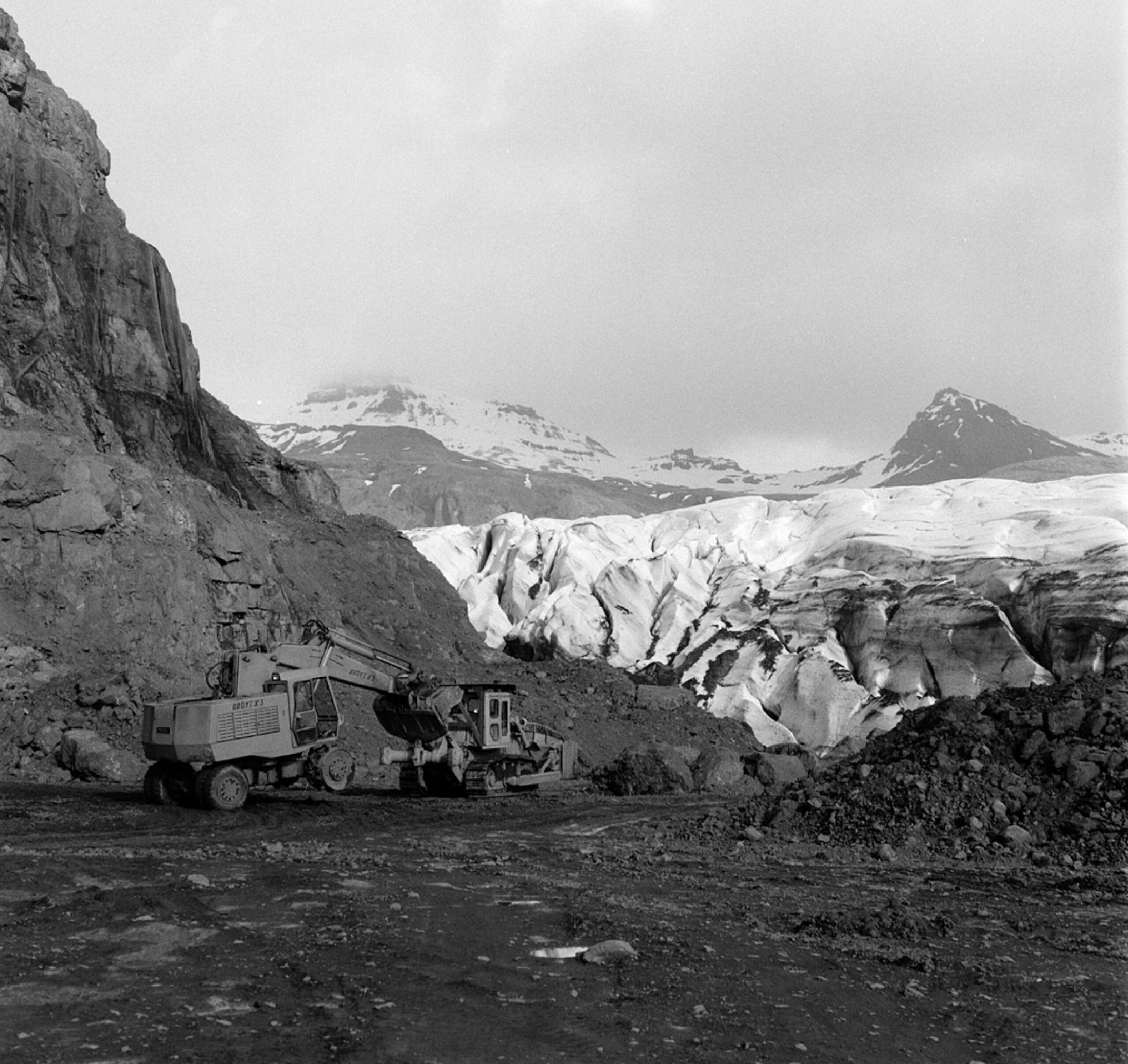
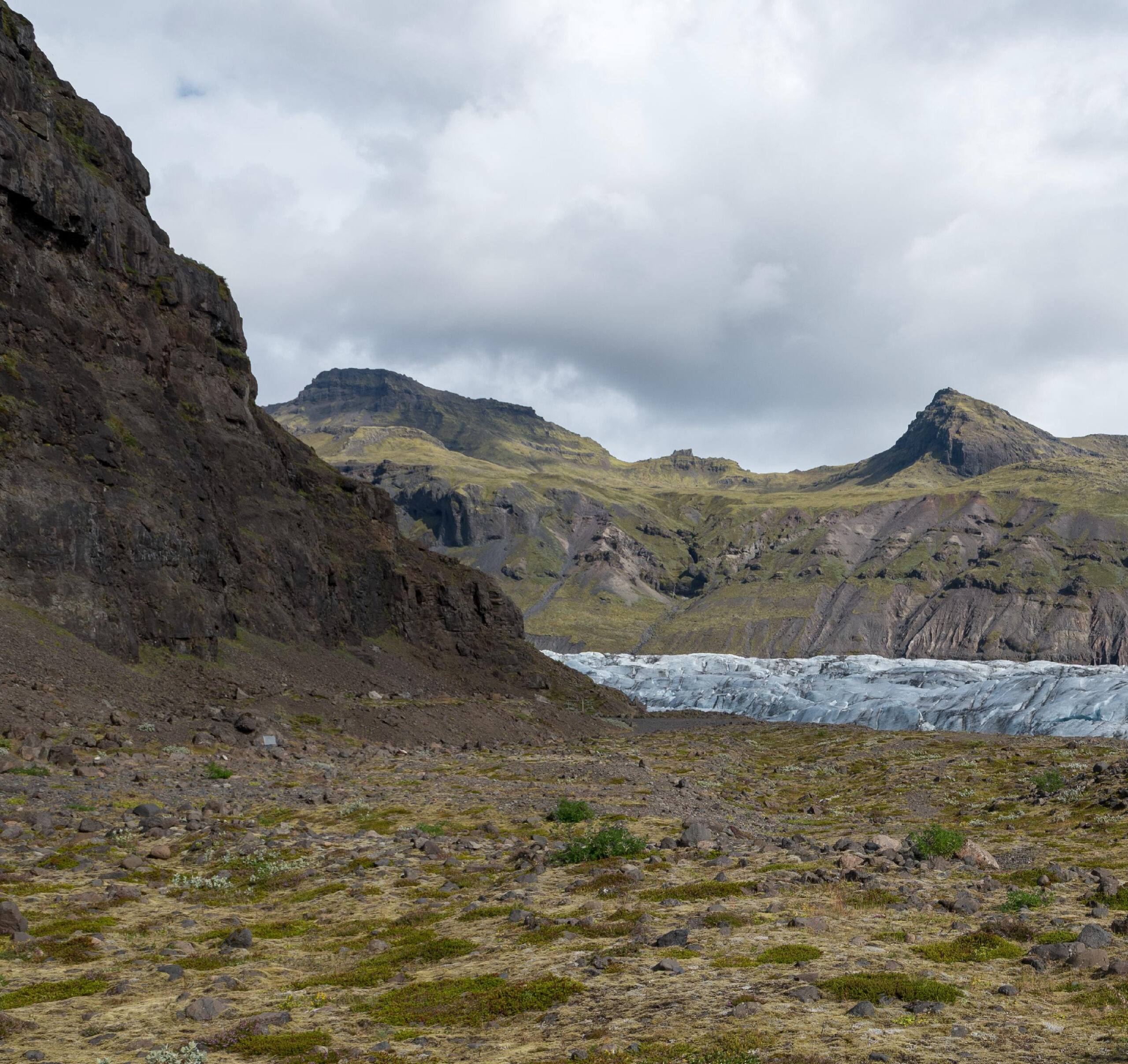
Western side of Svínafellsjökull’s snout in 1974 (left) and 2023. Photographer 1974: Thor Eyfeld Magnusson, Ljósmyndadeild Þjóðminjasafnsins.
Svínafellsjökull only reaches up to its moraine in the middle of the glacier. Its sides have disappeared and are replaces by expanding lakes. All of the glacier is thinning: where Svínafellsjökull laid on top of the fifty meter high moraine in 1900, it now barely scratches it. Eventually the snout will recede from the moraine and the lake will grow further.
A second difference with other Icelandic glaciers is the timing of its maximum extent. For Svínafellsjökull this happened in the Middle Ages, long before neighboring glaciers were at their longest. Based on the soil stratification of a moraine (Stóralda) formed at the time, Hjalti Gundmundsson concluded that it was formed in the 13th century (Gudmundsson, 1998:180). After having retreated for some centuries, Svínafellsjökull pushed up a much bigger composite moraine close to Stóralda in the 18th and 19th century, when surrounding glaciers reached their maximum extent. As a result, Svínafellsjökull coalesced with Skaftafellsjökull around 1700, making the lushy slopes of Hafrafell mountain trapped in ice. Sheep herders had difficulty getting their sheep up there. This lasted until 1935, when both glaciers retreated enough to set Hafrafell free again.
The third thing setting Svínafellsjökull apart is the way the glacier transports debris. On the top of Svínafellsjökull there are many rocks, much more than at other glaciers. The rocks have broken off from the surrounding steep mountain sides (including a large rock avalanche in 2013) and are transported downhill. Because the debris is located on top the glacier (supraglacial) they hardly erode and preserve their sharp edges. This process differs from most Icelandic glaciers, where debris transport is predominantly englacial or subglacial. Rocks then erode much more and get rounded off or striated. The differences in transportation types is evident in the composition of the glaciers moraines, where Svínafellsjökull has built up a moraines of less rounded material (Lee et al., 2018).

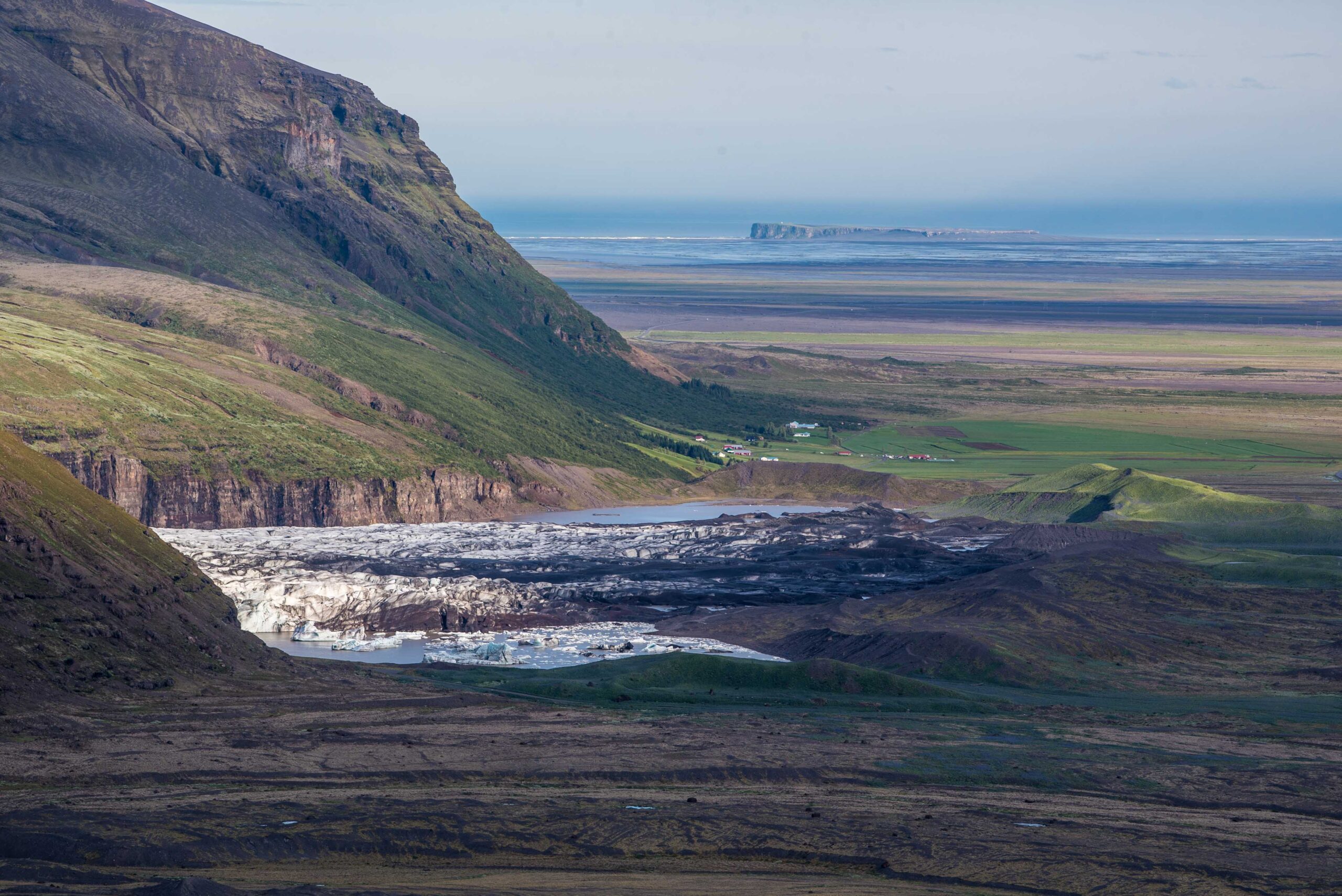
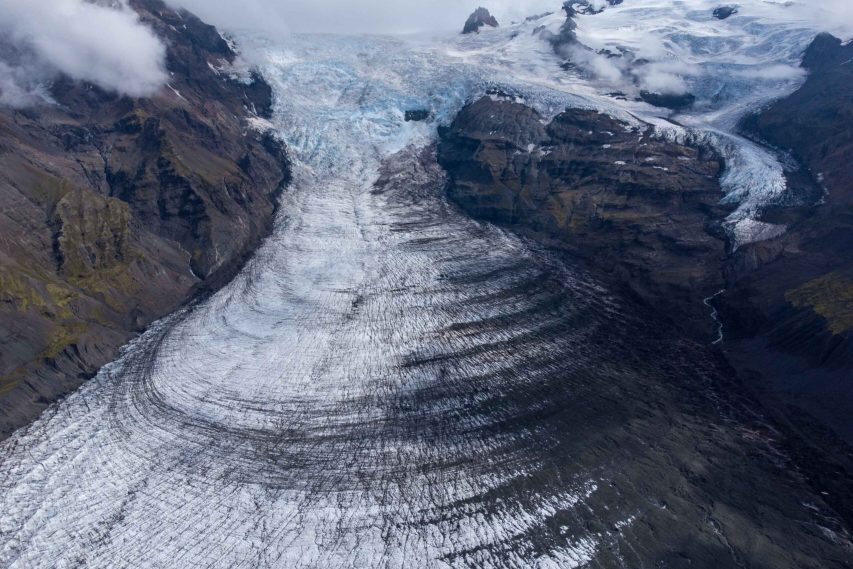
Transporting debris requires the glacier to move. We all know they do, but Svínafellsjökull was actually the first glacier in Iceland for which the velocity was measured. With the help of poles in the ice and a white cross painted on the opposing side of the mountain Swedish natural scientist Otto Torell found the glacier moving at a speed of 25 centimeters per day (Björnsson, 2017: 444). Another way to deduce Svínafelljökull’s velocity is by measuring the width of its ogives, arcuate shapes in the ice below an ice fall. Every year a darker and lighter band is formed and together they measure about hundred meters, corresponding with a speed of 25 cm a day.
The limited recession of Svínafellsjökull, the unstable and steep valley sides and overdeeping (trough) all contributed to a relatively high end moraine of over fifty meters. Even after so much thinning, the glacier still reaches all the way to the moraine, resulting in beautiful combinations of flowers and ice. But the link is brittle, so glacier excursion companies moved to other glaciers for safety reasons. In the near future thinning will cause the glacier to separate from the moraine completely. The snout will then rapidly start calving, increasing the loss of ice. In the coming decades a very long lake will appear, potentially stretching over five kilometers inland.

Search within glacierchange: